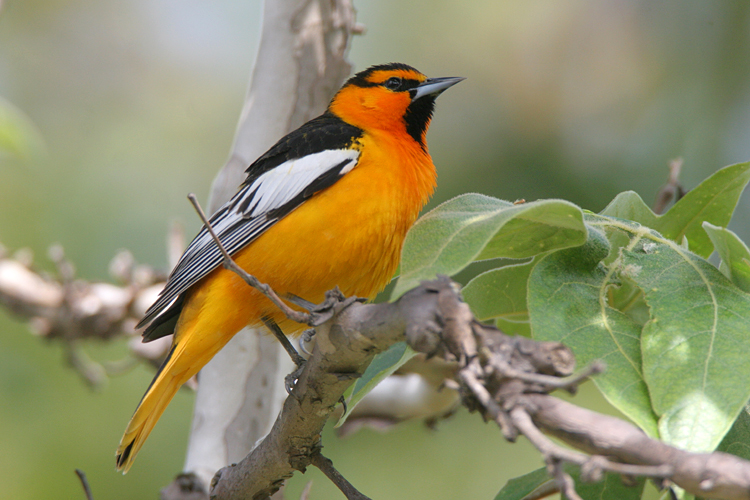
Location: Mission Trails Regional Park, San Diego, CA
Date: 2008-04-20
Lens: Canon 600mm IS F4 + 1.4x II Converter

 Bullock's Oriole
Icterus bullockii
Bullock's Oriole
Icterus bullockii
 Description
DescriptionA separate species or not? This bird was combined into a single species with the Northern Oriole when the two met and inter-bred. Their meeting was the result of newly planted trees in the great plains. But now the two species are mostly mating with their own kind, so they are considering separating the species again. This bird primarily feeds on insects, but consumes fruits and berries during late summer and early fall. Sycamore trees are a good place to spot this bird.
General: 7 to 8.5 inches in length.
Male: Orange face, underparts, rump, and outer tail feathers. Black crown, nape, eyeline, throat, back, wings and tail. Wings have a white wing patch and edges. Sharply pointed black bill. Immature male is similar to female, but has brighter orange and varying amounts of black on it's head.
Female: Olive colored upperparts. Pale orange chest. White belly. Grayish flanks. Two white wing bars.
Deciduous and riparian woodlands, parks and backyards. Found in areas up to 8000'.
 Nesting
Nesting4-6 grayish eggs with dark brown and black markings and a 12-14 day incubation period. Fledging occurs 12-14 days after hatching. The nest is a teardrop shaped sack made from bark, plant fiber, and string. The nest is built hanging from the tip of a tree branch.